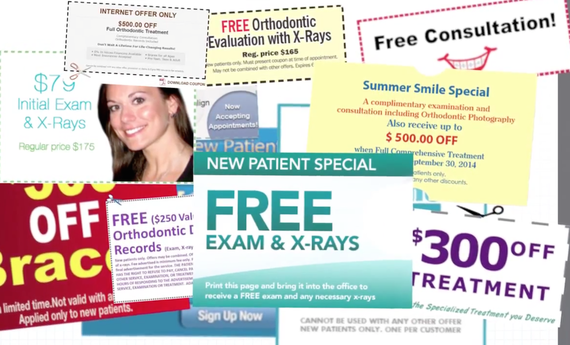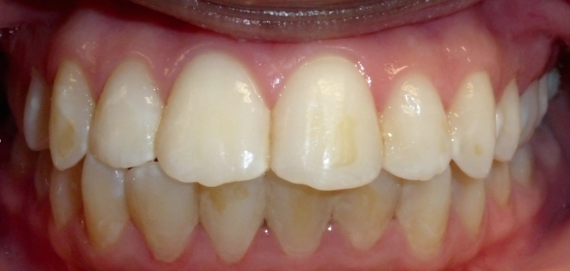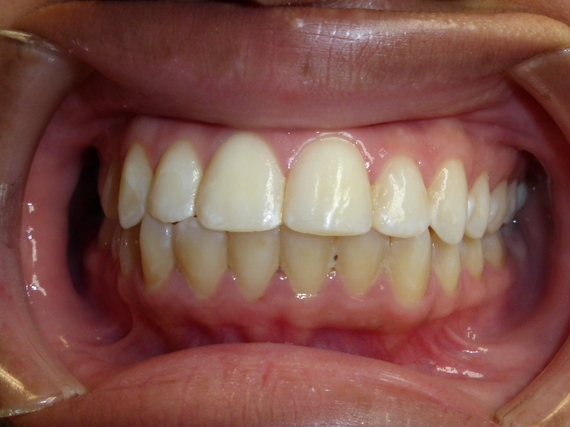Driven by beliefs that not all goods and services were equal, consumers historically were driven toward quality as a key differentiator in making a purchase. There was a good, better and best. Getting "the best" was very important, and worth a higher price.
This paradigm is no longer in play. Today, we live in a world of infinite discounting both online and in store where the lowest price drives purchasing decisions. After all, if you can buy the same thing in two different places, why not buy the least expensive? Goods and services that have perceived equal value and have no differentiators that make one appear superior then the others are called commodities.
This line of thinking has even affected health care. Let's take orthodontic care as an example. The public holds orthodontists in high esteem as honest, competent, educated professionals. All orthodontists go to college, dental schools, get their specialty training at accredited learning institutions, pass exams and get the same degrees and licenses to practice. So, should we make the assumption that all orthodontic care is equal?
Should the lowest cost treatment be chosen? Are braces just a bunch of metal brackets and wires stuck on teeth with all results being equal and equivalent?
Good dental or orthodontic care is not a commodity. Not all doctors have the same standards or results. There are differences. How can you make the best choice and investment toward quality orthodontic care for you and your family?
While it's difficult to differentiate the quality of care between providers to determine a positive orthodontic result, the following provides several tips and FAQs ensuring that you are a smart consumer of orthodontics:
-- Choose an orthodontist. Orthodontists are dentists who have 2-3 years of post-dental school education that focuses on smile esthetics, growth and development, and jaw function. They have extensive training and practice in the science of tooth movement, straightening teeth, and improving bites. This is in contrast to dentists who may occasionally provide orthodontic care, with limited training.
-- Choose a board-certified orthodontist. Board certification for orthodontists is a voluntary examination process driven by the pursuit of continued proficiency and excellence.
-- Ask the orthodontist these questions to determine that you are getting the most value for your investment:
1. Do you have a smile design philosophy? What are the things you look for in determining your plan for my treatment?
2. Can you show me how my teeth will look after treatment, before we begin? Only select orthodontists use suresmile digital technology that creates an accurate simulation of your future treatment.
3. Can you show me photographs and case studies of similarly-treated cases?
4. Will my care be graded according to a quality standard? (The American Board of Orthodontics has a grading scale that measures the quality of orthodontic correction. Patients of orthodontists using suresmile technology are treated to the highest measured standards).
5. Why is this the best time to treat the problem and why is this the best plan? What is the treatment time?
What is the cost of poorly-executed orthodontic treatment?
Orthodontic treatment affects the smile, speech, eating, jaw joint and muscle functions. It should be done correctly the first time to avoid costly problems:
• Wear, chipping or cracking of teeth caused by a poorly aligned bite (teeth that fit together incorrectly). Repair with crowns and implants is very expensive.
• Gum recession due to improper alignment of the roots in the bone during treatment necessitates costly gum surgery or grafting.
• TMJ (jaw joint) pain related to a poorly-aligned bite.
Time is Money
In order to design a radiant, confident, healthy smile, treatment must be meticulously planned. It requires the use of state-of-the-art materials and technology. Straightening teeth is not a cookie-cutter procedure that runs blindly on autopilot.
At the conclusion of treatment, bonding adhesives need to be removed carefully so as not to scratch the enamel surface. Teeth frequently have chips or irregular edges. They require artistic reshaping (see photos). This also takes time.
Orthodontists devoted to their specialty take frequent continuing education to continuously improve. This requires an investment of money and time away from the office.
Expertise, the finest materials, advanced technology and training are differentiators for your choice of an orthodontist. Do right by your smile, be an informed orthodontic treatment shopper. You are investing in something priceless.


